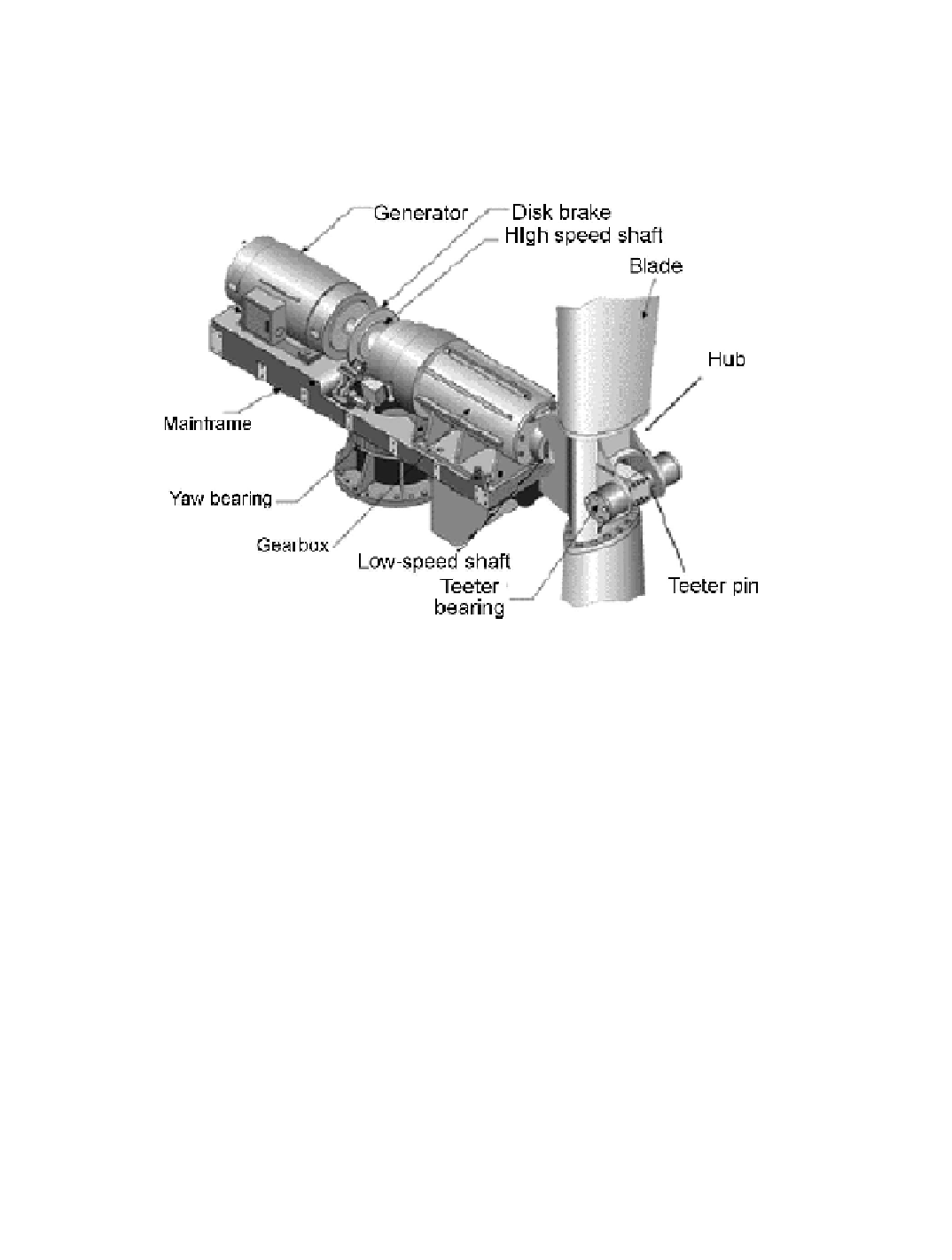Environmental Engineering Reference
In-Depth Information
As illustrated in Figure 4-0, turbines with two blades typically use a
teetered hub
with a pivot bearing. Teetering motion of the connected blades substantially reduces unbal-
anced aerodynamic and yawing-induced cyclic loads. Transfer of these cyclic loads into the
drive train is essentially eliminated. The pivot system is most often an
elastomeric bearing
with teeter stops to limit deflections. These components have been found to be reliable, but
they are additional cost components that also affect the design of the blade aerodynamic
controls.
Figure 4-0. Schematic view of the teetered hub and drive train of a two-bladed wind
turbine.
Teeter motion greatly reduces cyclic loads transmitted from the hub to the drive
train, nacelle, and tower. [Cotrell 2002]
Blade Aerodynamic Control
Most wind turbines today have some type of aerodynamic control on the rotor for power
and/or speed control. One of the most popular means for limiting rotor power is changing
the
pitch angle
of the blades.
Full-span pitch
(turning the entire blade about its longitudinal
axis) of the blades is used on most large- and medium-scale wind turbines today. Hydraulic
cylinders are typically used in the pitch actuator, although electromechanical gear motors are
now also widely used. Full-span pitch facilitates rapid control of power output and, perhaps
more importantly, effective speed control following loss of electrical load. This does come
at the expense of a somewhat more complex and expensive rotor hub.
Nearly all small turbines using pitch control employ a
governor
activated by centrifu-
gal forces. The classic
fly-ball governor
on the
Jacobs wind generator
(Figure -20) used
weights that mechanically changed blade pitch towards feather. A later version used the
weight of the blade itself to activate the governor. All mechanical governors require periodic
service, and most have demonstrated only modest reliability. As a successful alternative,
one of the most popular product lines of small-scale wind turbines, from Bergey Windpower
Company (Figure 4-5) employs a patented
Powerflex
rotor system that uses weights near the
rotor blade tips. Aerodynamic and centrifugal forces act together to twist the blades toward

Search WWH ::

Custom Search